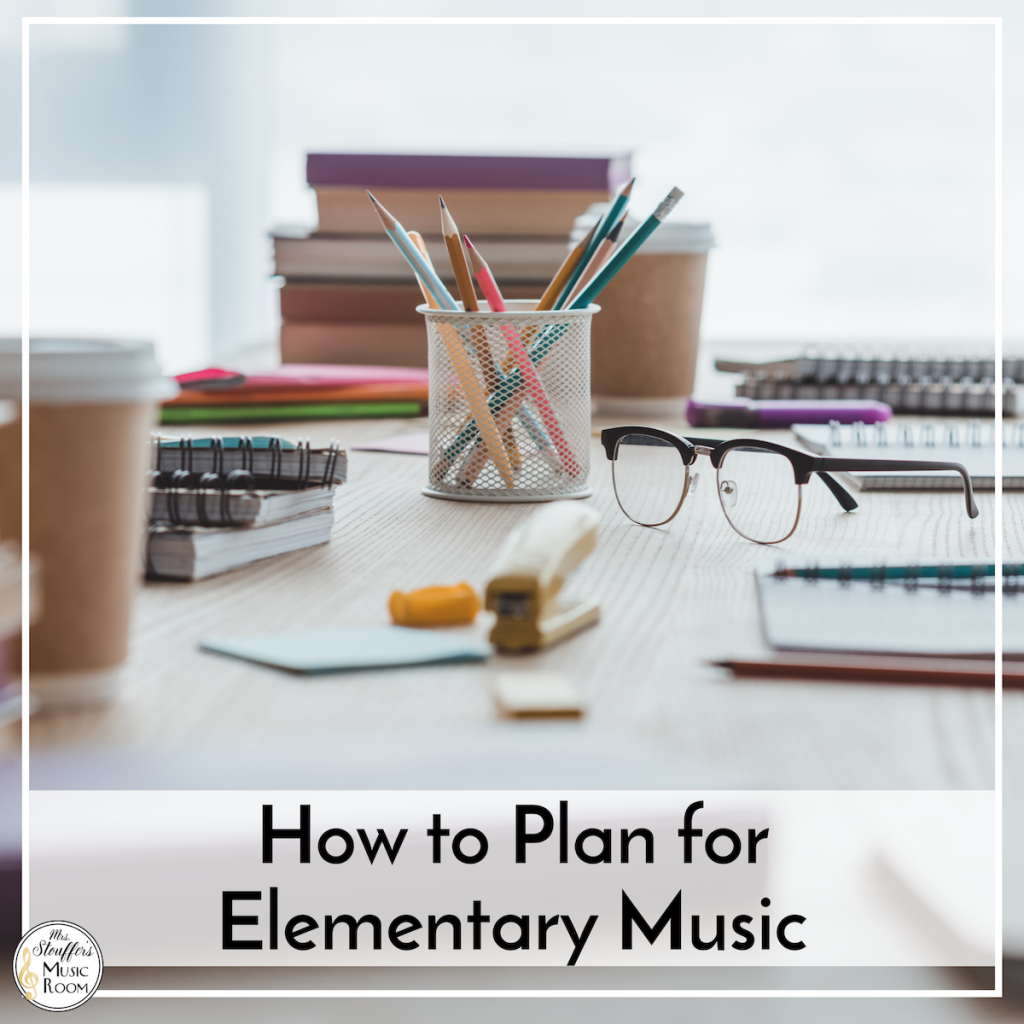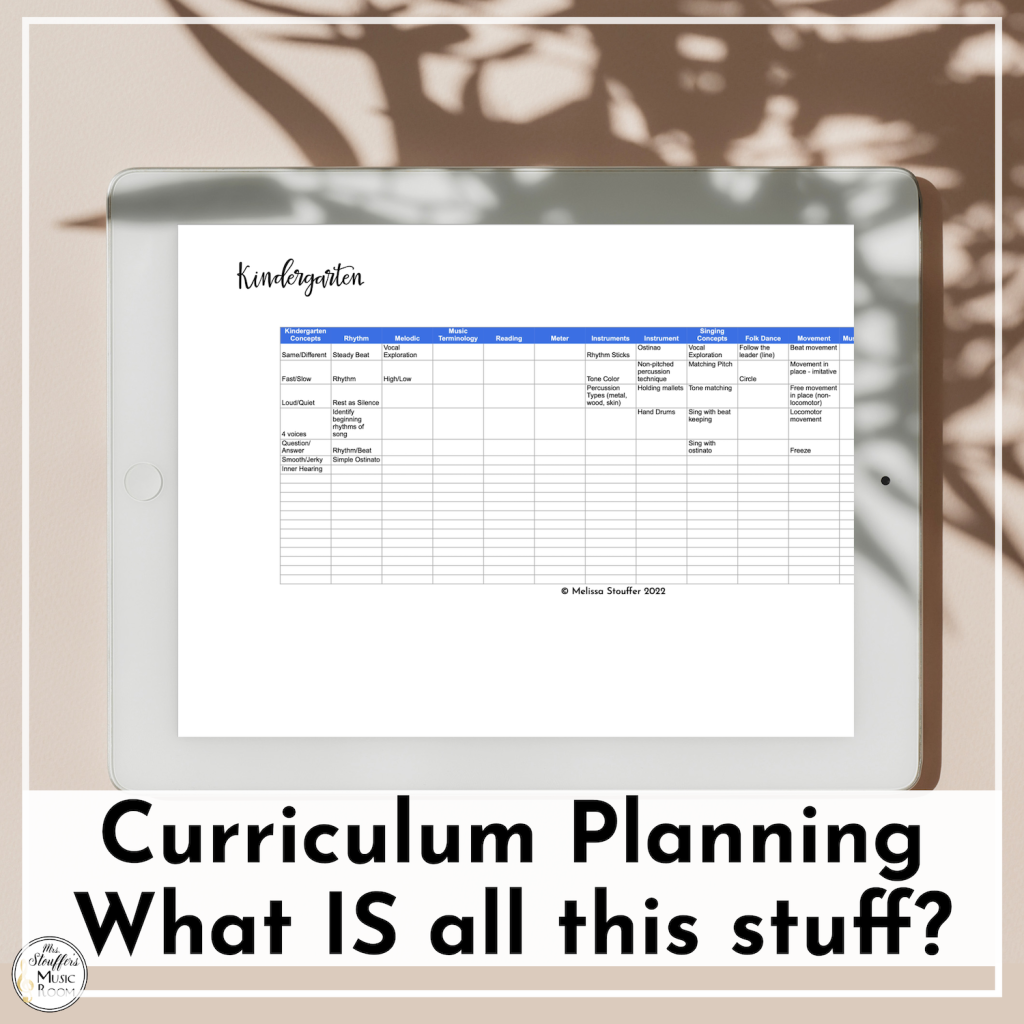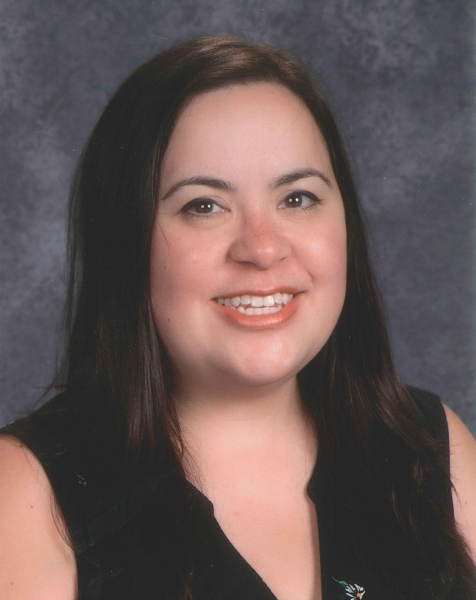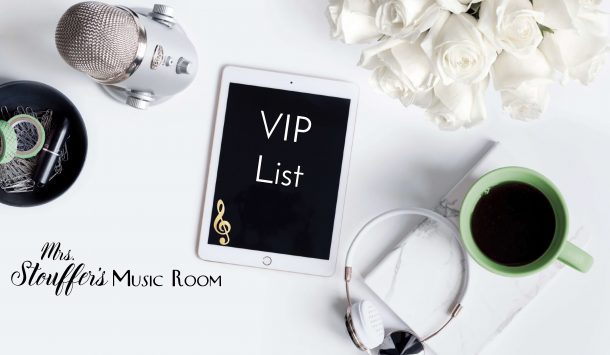PD is EVERYWHERE you look. Virtual sessions, Instagram ideas, the Facebook Groups, and my fav, in person conferences which *fingers crossed* are coming back soon. It is SO easy to get distracted by the wonderful things we see our colleagues doing. I’m super guilty of coming back from a conference with a cool folk dance and wanting to teach it to 3 grade levels because I want them to do it but have no clue where it really is supposed to fit in my sequence. Did I cover everything that year I had set up for myself? Probably not…
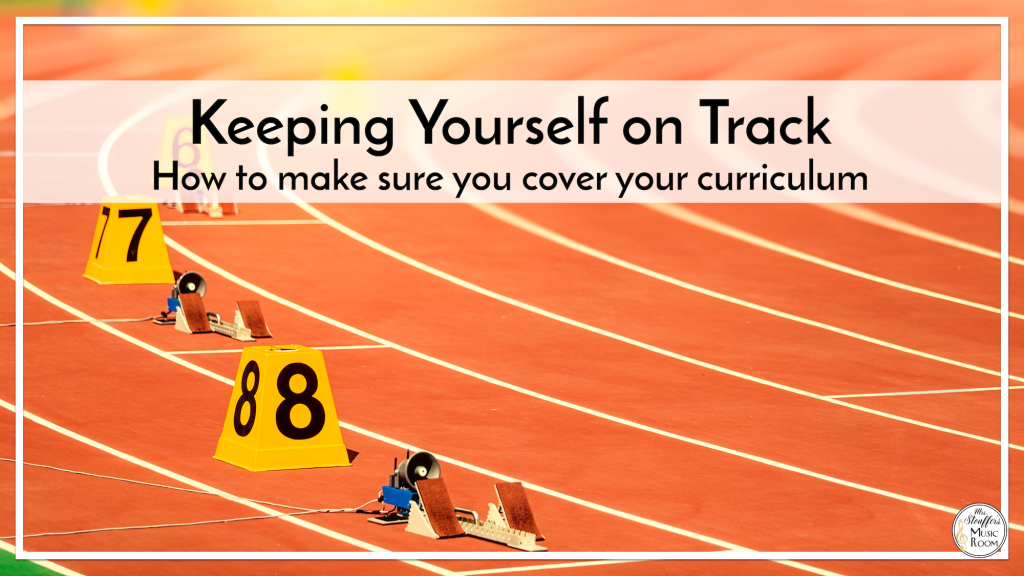
So I’m going to pause you here for a moment and suggest you read this post if you haven’t already because I’m going to reference a few things from it.
1. Set a goal and stick to it
When we were students, we’d get our assignments and know that no matter what, that paper better be turned in on time or our teacher was going to dock us points. As music teachers, we are sort of, in some odd way, our own bosses. What I mean is that unless you have a super hands on administrator or a curriculum from the district that determines EXACTLY what you can teach and when, you get to choose.
You can choose to put all the rhythm elements together on a day. There is the flexibility to work on only solfege, composing, or whatever you’d like with your students. We can tell ourselves that our students need another week, they can play a game another time. Maybe you want to wait because it’s going to be too time consuming to prep that lesson and also the one that you need for another grade.
And we have a choice in our work. We give ourselves unlimited time to work on lessons, grade papers, put up things in our classrooms.
Don’t let things slide. Set yourself a due date for EVERYTHING and stick to it. When those papers need to be done, when the stuff needs to be on the wall, and when you move on with students’s lessons.
2. Start by going backwards
Once you have all your presentation dates plotted out, work backwards from each step.
What needs to happen the previous week? Preparation right up to the spot where you would present, with the same song.
Following the Kodaly method for preparation, this is the order for the preparation stage.
- Experience: using it in songs, dances, and hearing it but not calling attention to it. A perfect example here is using the dance Chimes of Dunkirk as part of the half note preparation. It is obvious in the song, kids do a movement that goes with it, but you aren’t really calling attention to it.
- Call attention to it: What is happening there? What did you notice? Who heard something new?
- Using it aurally, and kinesthetically: clapping, singing, showing the extra beat (for half note) with the hand slide, and using it but without naming it. For a solfege concept, humming it instead of singing the solfege name, and using a body sign or a “shrug” instead of a hand sign.
- Icon notation. It’s important that this is after the kids can already identify the note or rhythm because otherwise they use the visual cues but may not be able to use independently. For example: if you show the long icon, they learn to see it rather than hear that the note is longer than one beat. Questions like: is this note longer than or shorter than a “Ta/Quarter note/etc”?, Is this note above or below Do, etc. can help determine if students are ready for the icon notation.
Each one of these steps can be plotted on your spreadsheet so that you know what needs to happen when for the presentation to occur on your chosen day.
3. Obviously things can change
March 2020.
We can be flexible, but now, instead of being distracted by that awesome new idea, we can incorporate it in our calendar where it is appropriate for the concept, the grade, the skills we are working on with our students.
4. Track all the things
Y’all know how much I love lists, but make a list for it:
- Standards you’ve covered
- Cultures you’ve covered
- Time periods
- Diverse groups for composers
- Date each grade was presented a concept (or do it by class) – this one is AMAZING for looking back a year later when you are trying to make a calendar, or see where a group of kids is in the sequence.
- Creative experiences with classes
A few things I have that might help you out…
- 32 Weeks of Listening – 32 musicians and composers for each grade (192 in total) that helps you ensure you cover a variety of cultures, time periods, and genres.
- Standards Checklists – an easy checklist of the standards for each grade level so you can keep track of which ones have been covered
- Free Concept Planner Template – if you didn’t snag it from the blog post linked above about planning, grab it now!
- Sub Starter Set – Easy sub files so you can make sure your sub is set up to be successful!
I hope this is helpful!


